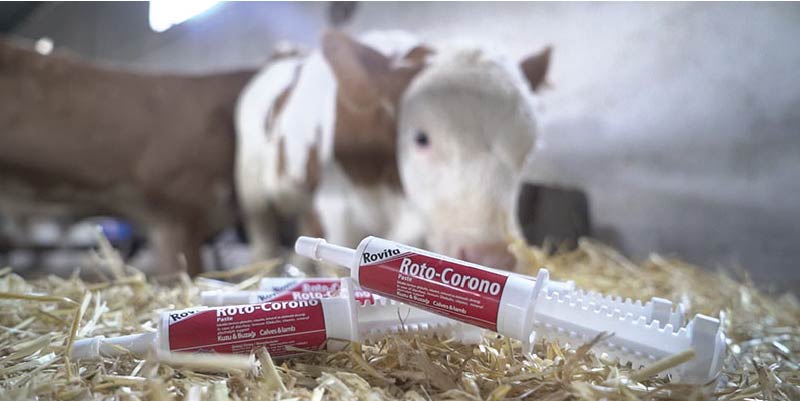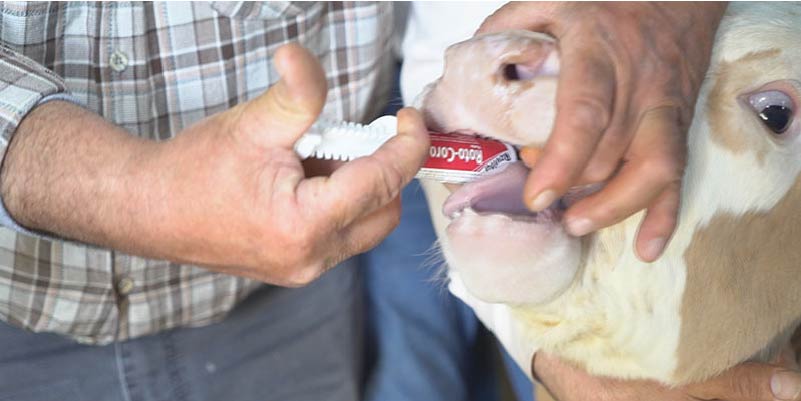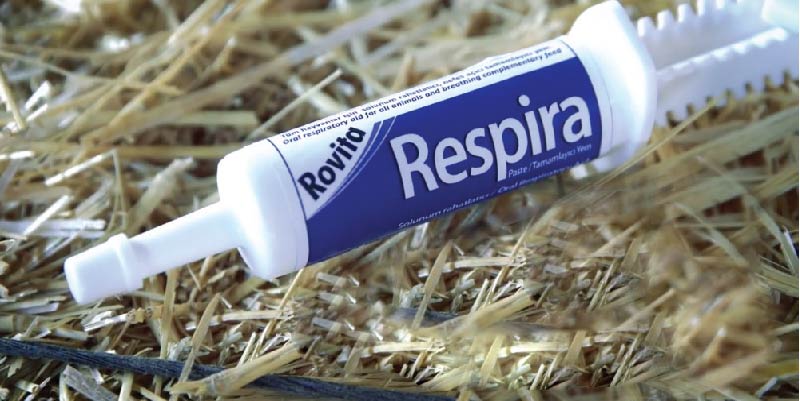CALF HEALTH SOLUTIONS


Rovita New Born
A vitamin, organic mineral, energy, protein and immune globulins to boost immune system supplement to be used urgently within the first 18 hours after calves birth.


Rovita Roto-Corono
A vitamin, organic mineral, energy, protein and immune globulins to boost immune system supplement to be used urgently within the first 18 hours after calves birth.


Rovita Respira Paste
Complimentary feed used to soothe the respiratory system and to secure airway of calves, yeanlings and other animals.
Calf Health introduction.
The aim of successful calf rearing is to produce a healthy calf which is capable of optimum performance throughout its life from birth through to finishing. A suitable calf rearing system has the following characteristics:
Good animal performance with minimal disease and morbidity
Low cost input
Low labour input
To ensure a healthy calf, the aim is to minimise the calf’s exposure to disease, and maximise its defence against disease. In minimising a calf’s exposure to disease, providing a clean, disease-free environment is fundamental. This involves:
Thorough cleaning and disinfection, before and during the calving season, of all areas used by calves.
Providing a clean, straw-bedded lying area with no draughts and good ventilation.
Accommodating calves in batches so that young calves are never mixed with or accommodated in areas used by older calves.
The objective of a well-designed herd health program is to address multiple areas of management in order to reduce the likelihood of disease outbreaks and is a necessary step if economic returns are to be realized. A herd health program that includes biosecurity, vaccination, and the culling of carrier animals, drawn up in consultation with a veterinary practitioner, is the best way to address disease problems.
Calf Health Infectious disease agents

Calf scours
Scours are the main causes of calf mortality. The majority of calf scours are caused by six organisms: viruses such as rotavirus and coronavirus, bacteria such as E. coli and Salmonella sp., and protozoa, such as cryptosporidia and coccidia. As outlined above, vaccination of the dam will help reduce the probability of calf scours but cannot solely be depended upon for prevention on calf Health.
Furthermore, there are no vaccines available to combat protozoa. However, good hygiene and management practices will reduce the likelihood of infection from cryptosporidia and coccidia. Diarrhea in calves results in losses of water and electrolytes, such as sodium, bicarbonate, chlorine, and potassium. Calves with diarrhoea can lose 10-12 per cent of their body weight in water losses. Depending on the severity of the diarrhoea and dehydration, calves may need to receive oral electrolyte solutions once daily or as many as four times a day. Calves should be fed their regular allowance of milk when receiving oral electrolytes. Scientific evidence has accumulated that continued milk feeding does not worsen or prolong the course of diarrhoea, despite a somewhat lowered digestive capacity. The milk supplies the calf with energy and other nutrients that are essential for survival.
Calf pneumonia
The underlying cause of pneumonia or bovine respiratory disease (BRD) is extremely complex with the involvement of viruses, bacteria and mycoplasma. The incidence of infection is usually high, but the mortality rate is variable. The main viruses that cause outbreaks of pneumonia in calves are IBR, RSV, PI-3, and BVD. Factors associated with susceptibility to pneumonia in calves are; stress (disbudding, castration), overcrowding, inadequate ventilation, draughts, fluctuating temperatures, poor nutrition and/or concurrent disease. In most cases the main infective agent is a virus, which causes respiratory tract damage.
This effect is worsened by Mycoplasmas and secondary bacterial infections (e.g. Mannheimia (Pasteurella) haemolytica). Viruses are unaffected by antibiotics, however, antibiotic treatment is usually administered to kill off the secondary bacterial infections and offer the calf the opportunity to fight the disease. In order to direct the appropriate treatment strategy, nasal swabs should be submitted to the Regional Veterinary Laboratory for accurate identification of the pathogen(s) involved. Calves should be vaccinated where specific problems arise. Veterinary advice should be sought and the widest protection against pneumonia will be achieved where a vaccination programme includes the three most common respiratory viruses (IBR, RSV and PI-3) and the bacterial pathogen Mannheimia (Pasteurella) haemolytica.
Calf immunity
In the bovine species, immunoglobulins do not cross the placenta in utero, and the newborn calf is, therefore, dependent on antibodies obtained through ingestion of colostrum. Maternal colostrum provides the main source of immunoglobulins (Ig) and other nutrients for the newborn calf. If the serum immunoglobulin concentration is less than 10 mg/ml when sampled between 24 and 48 h of age, calves may be defined as having failure of passive transfer (FPT) of protective colostral immunoglobulins. Calves that receive inadequate colostrum are more susceptible to neonatal infections. This problem can be particularly severe in calves that have been moved off their farm of origin and through markets. In these circumstances and calf Health, there is greater risk of exposure to infection. Foetal growth retardation or a stressful birth process is likely to reduce the ability of the intestine to absorb immunoglobulins from colostrum.
Variation in immunoglobulin concentration
Immunoglobulins help to maintain the animal’s health and reduce mortality rates by helping to eliminate foreign agents in the body (e.g. bacteria and viruses). Considerable variation exists between cows with respect to immunoglobulin concentration in the colostrum. No significant difference between colostrum IgG1 concentrations in either the front or hindquarters of the udder have been reported however, a large variation in colostrum yield exists between beef and dairy cows (Table 1). Research at Teagasc, Grange has clearly shown that dairy calves with low levels of immunoglobulins had the highest incidence of diarrhoea, respiratory disease and mortality compared with age matched suckled beef calves (Earley et al., 2000). This is primarily due to the much lower concentration of IgG in colostrum of dairy cows compared with suckler cows and Calf Health.
